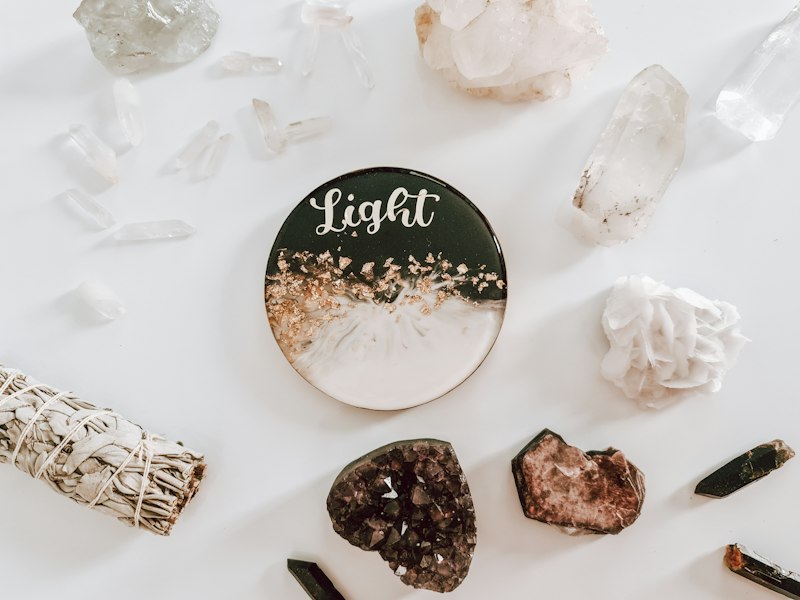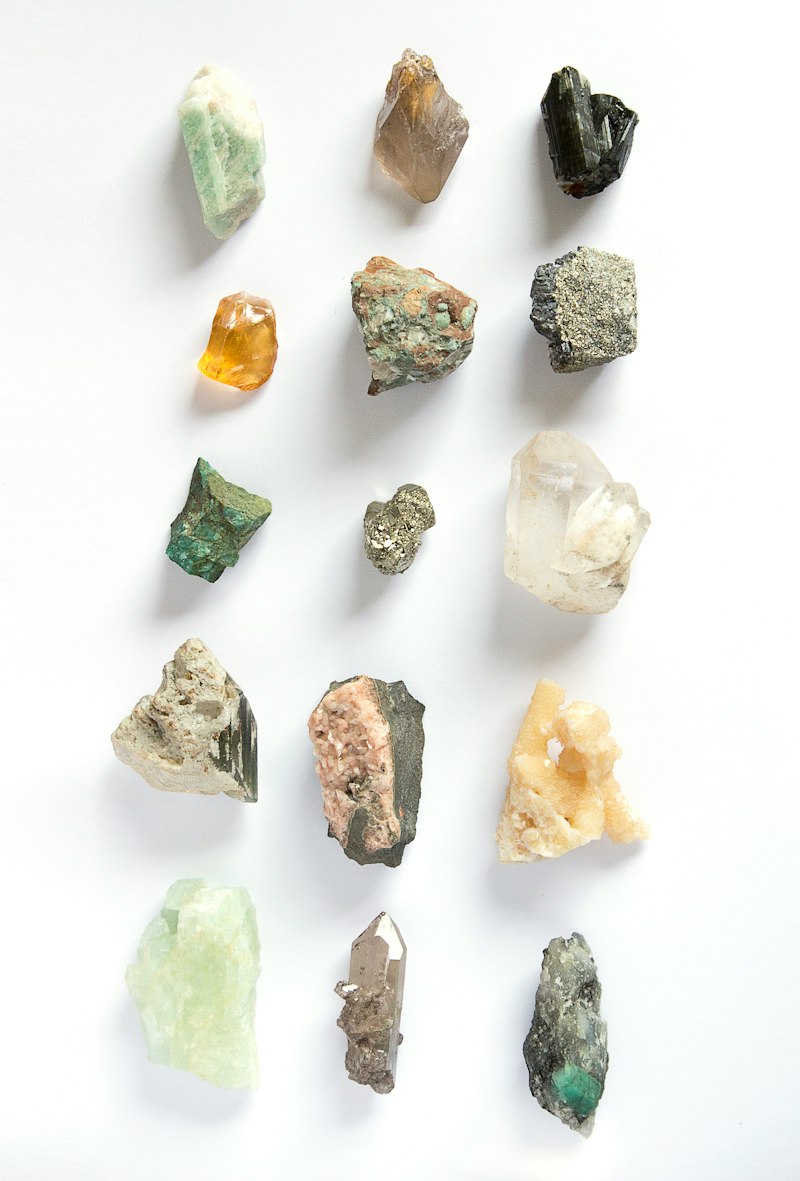Viking Gemstone Beliefs: Tales of Norse Mythology
Have you ever wondered about the captivating tales and beliefs surrounding Viking gemstones? In Norse mythology, these precious stones held significant meaning and were believed to possess magical properties. Let’s dive into the fascinating world of Viking gemstone beliefs and explore the myths that entwined them.
Amber, known as “Nordic gold,” was highly revered by the Vikings. They believed that amber originated from the tears of Freyja, the goddess of love and beauty. It was considered a symbol of eternal light and was often used in amulets to bring good luck and protection to its wearer.
Another gemstone treasured by the Vikings was hematite, known as “bloodstone.” This dark, shiny stone was associated with the god Tyr, who was known for his bravery and justice. Hematite was believed to enhance courage, strength, and protect warriors in battle. It was also thought to have healing properties and could stop bleeding when placed on wounds.
Turquoise, often found in Viking jewelry, was connected to the god Odin, the Allfather. The vibrant blue color symbolized the sky and sea, both realms associated with Odin’s wisdom and magic. Turquoise was believed to bring good fortune, ward off evil spirits, and strengthen one’s connection with the divine.
The Vikings also valued garnets, which they called “blood drops of the gods.” These deep red gemstones were associated with Thor, the mighty god of thunder. Garnets were believed to bring protection, strength, and enhance one’s inner power. It was common for Vikings to wear garnet amulets or carve them into intricate designs.
In addition to these gemstones, the Vikings had a special fondness for silver. They adorned themselves with silver jewelry, believing it had purifying properties and could ward off malevolent beings. Silver objects were also commonly used as offerings to the gods, showcasing their importance in Viking religious practices.
The tales of Viking gemstone beliefs not only highlight their connection to Norse mythology but also provide a glimpse into the vibrant culture and spiritual beliefs of these ancient seafarers. The Vikings’ reverence for gemstones speaks volumes about their deep-rooted belief in the power and symbolism of these precious stones.
As we delve into the history of Viking gemstone beliefs, we uncover a rich tapestry of mythology and folklore that shaped their worldview. These tales continue to captivate our imaginations, reminding us of the enduring allure and intrigue surrounding Viking culture.
Unearthing the Mysteries: Viking Gemstones Unlock Secrets of Norse Mythology
Did you know that beneath the surface of Viking history lies a treasure trove of gemstones that hold the key to unraveling the secrets of Norse mythology? These exquisite gems, adorned by the fierce Vikings, not only served as symbols of wealth and status but also had deep-rooted spiritual significance.
One such gemstone is the legendary amber, known as “Nordic gold.” With its warm hues ranging from honey-yellow to deep orange, it’s no wonder the Vikings believed amber held the power of the sun. They revered it as a protective talisman, attributing it with the ability to ward off evil spirits. The allure of amber extended beyond the earthly realm for the Vikings, as they associated it with Freyja, the goddess of love and fertility.
Another gem cherished by the Vikings was the mesmerizing amethyst. This enchanting purple stone was thought to possess magical properties capable of enhancing one’s intuition and spiritual connection. The Vikings believed that amethyst could open the gateway to the divine realms, granting them access to the wisdom of their gods and goddesses. It was often used in religious ceremonies, where priests and priestesses would gaze into the stone, seeking guidance from the otherworldly beings.
No exploration of Viking gemstones would be complete without mentioning the captivating lapis lazuli. This deep blue gemstone, flecked with specks of gold, was thought to embody the night sky and carry the energy of the cosmos. Vikings saw it as a symbol of truth, clarity, and inner peace. They believed lapis lazuli could reveal hidden truths and provide protection during their journeys, both physical and spiritual.
Ruby, with its fiery red hue, held a special place in Viking culture. Associated with the god Thor, it was believed to possess the power of lightning and fire. Vikings saw rubies as a source of strength, courage, and protection. Warriors often carried these precious gems into battle, believing they would bring them victory and invincibility.
Powerful Amulets and Divine Connections: Exploring Viking Beliefs in Gemstones
Introduction:
Have you ever wondered about the mystical beliefs of the Vikings and their deep connection with gemstones? The Vikings, renowned for their seafaring skills and fierce warrior culture, also held strong spiritual beliefs. They believed that certain gemstones possessed powerful properties and could be used as amulets to provide protection, strength, and divine guidance. In this article, we delve into the fascinating world of Viking beliefs in gemstones and the significance they held in their society.
Amulets: Symbols of Power and Protection
For the Vikings, amulets crafted from gemstones were more than just decorative pieces—they were potent symbols of power and protection. These amulets served as a shield against malevolent forces and provided wearers with courage and luck in battle. Each gemstone held different meanings and functions, tailored to the specific needs of the individual.
Divine Connections and Symbolism
Gemstones played a vital role in establishing a direct connection between the Vikings and their gods. They believed that the gods resided within these precious stones, endowing them with divine energy. For instance, the sparkling green hue of emeralds was associated with Freya, the goddess of love and fertility. Rubies, with their fiery red brilliance, represented the god Thor’s protective and thunderous power.
Charms from Nature’s Treasures
The Vikings had a profound respect for nature, and their amulets often featured gemstones sourced from the earth itself. Amber, a fossilized resin, was highly treasured and believed to possess healing properties. It was considered a gift from the sea and was frequently worn as an amulet to protect against illness and misfortune. The translucent beauty of moonstone was associated with the moon’s magic and was believed to bring inspiration and prophetic visions.
Harnessing the Power of Gemstones
The Vikings believed that gemstones had the ability to enhance their own inherent strengths and characteristics. Warriors would wear amulets adorned with carnelian, a vibrant red stone associated with bravery and vitality, to increase their courage on the battlefield. The serene blue of sapphires was thought to enhance wisdom and intuition, making them a preferred choice for seafarers seeking safe voyages.
Conclusion
The Viking belief in the power of gemstones and their intricate divine connections showcases the rich spiritual heritage of this ancient civilization. Gemstone amulets served as protective talismans, symbolized divine energies, and amplified the natural qualities of the wearer. Today, we can still appreciate the allure and significance of these mystical stones, keeping alive the legacy of the powerful amulets that once played an integral role in the lives of the mighty Vikings.
Beyond Gold and Silver: Viking Gems as Sacred Symbols in Norse Mythology
When we delve into the rich tapestry of Norse mythology, we encounter a world beyond gold and silver—Viking gems, which held immense significance as sacred symbols. These magnificent gems possessed an aura that transcended their material worth, capturing the imagination of the Norse people. In this article, we will explore the captivating realm of Viking gems and their deep-rooted connections to Norse mythology.
In the vast expanse of Norse mythology, gems were revered for their mystical properties. They were believed to possess supernatural powers and were often associated with gods and goddesses. One such gem was the Brísingamen, a beautiful necklace worn by Freyja, the goddess of love and beauty. It was said to have been crafted by dwarves and symbolized not only Freyja’s allure but also her connection to fertility and wealth.
Another legendary gem in Norse mythology is the Skíðblaðnir, a magical ship owned by the god Freyr. This remarkable vessel had the ability to fold up like a handkerchief and fit inside one’s pocket, yet could expand to accommodate all the gods. It shone with radiance and exemplified the craftsmanship of the dwarves, who were renowned for their skill in creating such treasures.
The tales of Viking gems are intertwined with heroic feats and quests. One such tale revolves around the mythical Mead of Poetry, a drink that bestowed poetic inspiration upon those who consumed it. The mead was stored in three precious vessels called the Óðrœrir, Són, and Boðn. These exquisite containers, adorned with intricate designs and studded with gems, played a pivotal role in the pursuit of knowledge and artistic expression.

Gemstone Guardians: How Viking Beliefs Shaped Their Use of Precious Stones
Have you ever wondered about the mystical connection between gemstones and ancient cultures? The Vikings, known for their seafaring prowess and rich mythology, held a deep reverence for precious stones. In this article, we will delve into the intricate world of Viking beliefs and how they shaped the use of gemstones in their society.
For the Vikings, gemstones were more than just ornamental accessories; they were believed to possess divine powers and provide protection. One such gemstone was the garnet, which held great significance in Norse mythology. Vikings believed that wearing garnets would bring them good health, prosperity, and ensure safe travels during their daring voyages.


The Vikings also associated specific gemstones with their gods and goddesses. For instance, the deep blue sapphire was linked to Odin, the chief god, symbolizing wisdom and spiritual insight. Emeralds were connected to Freyr, the god of fertility and abundance. These associations not only elevated the status of the gemstones but also bestowed upon them an almost sacred aura.
In addition to their metaphysical properties, Viking gemstones also served practical purposes. They were often used as amulets or talismans to ward off evil spirits and protect the wearer from harm. The Vikings believed that these gemstone guardians possessed the power to shield them from danger and bring good fortune.
Furthermore, gemstones were utilized in decorative objects and jewelry worn by both men and women. Elaborate brooches adorned with gemstones were a common sight, serving as symbols of wealth and social status. These intricately crafted pieces showcased the Vikings’ exquisite craftsmanship and their fascination with the beauty of gemstones.
Viking beliefs greatly influenced the use of precious stones in their culture. Gemstones held immense spiritual significance, acting as guardians and conduits of divine power for the Vikings. Their deep reverence for these stones is a testament to the captivating world of ancient beliefs and the enduring allure of gemstones throughout history.


